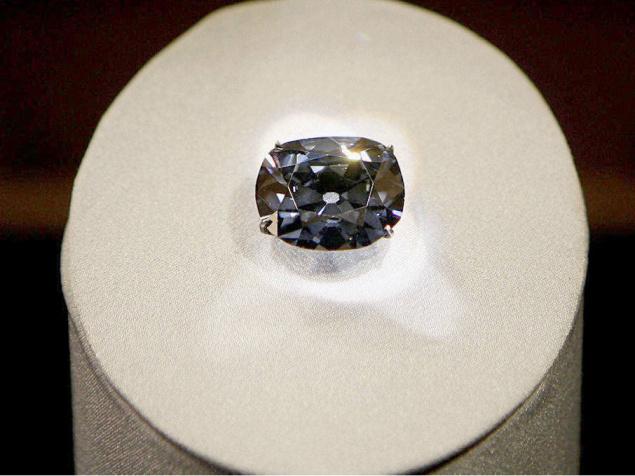
/ Reuters
Legendary diamonds mined by the Qutub Shahis are on display in Washington, Paris and Moscow.
It is not just Kohinoor; nine other famous diamonds left the shores of India and these are now displayed in museums in Washington, Moscow, Paris and Istanbul, besides forming a part of the Iranian crown jewels.
The precious nine, all categorised as legendary diamonds and mined by the Qutub Shahis of the Deccan, are the Hope Diamond, Hortensia, Darya-i-Noor, Noor-ul-Ain, Orlov (also called Orlof), Regent, Sancy, Shah Diamond and Spoonmaker’s, says V. Madhavan, who worked as a Professor of Geology in the Kakatiya University.
While the 45.5 carat Hope diamond is currently on display at the Smithsonian in Washington DC, the 190 carat Orlov diamond, a bluish-green gem, is now part of Moscow’s Diamond Treasury.
On the other hand, the 140.6 carat Regent, 55.2 carat Sancy and 20 carat Hortensia are now at the Louvre museum in Paris.
Two pink diamonds, the 182 carat Darya-i-Noor and 60 carat Noor-ul-Ain are part of the Iranian crown jewels while the 88.7 carat Shah Diamond and 86 carat Spoonmaker’s are housed in the Diamond Fund of the Kremlin and Topkapi Palace in Istanbul respectively.
Origins a mystery
Prof. Madhavan, who has studied diamond mining for nearly six decades, says that by all historical accounts, the Kohinoor was mined by the Kakatiyas when Rani Rudrama Devi headed the kingdom, its headquarters in present day Warangal.
Kohinoor’s exact vintage, right from its discovery, continues to be a mystery. However, “There is a general consensus among historians that it was found at Kolluru in the late 13th century in present day Guntur district of Andhra Pradesh,” he said adding that Kolluru was part of the Kakatiya kingdom.
Former Professor of History at the University of Hyderabad, V. Ramakrishna, said the Manual of “Kistna District in the Presidency of Madras”, written by Gordon Mackenzie and published in 1883, also indicated that the Kohinoor was found in Kolluru, then part of Krishna district.
Pages 244-247 refer to diamond mining in the district in general and the Kohinoor in particular. The manual however, says that the gem was mined by Qutub Shahis and not the Kakatiyas.
Another book, A Study of the History and Culture of Andhras, by noted historian K. Satyanarayana and published in 1982, also speaks of the Kohinoor being found in Kolluru.
According to Prof. Madhavan, India was the only producer of diamonds in the world till 1725 AD when they were mined in Brazil. Later in 1870, diamonds were explored in South Africa. Marco Polo, who visited India in the 13th century, talks in his travelogue of an inland kingdom ruled by a queen (Rudrama Devi)… “which produced all the diamonds in the world”.
At the time of its discovery, the Kohinoor was the largest diamond in the world. But no longer. In 1905, workmen at the Premier Mines in South Africa unearthed the 3106 carats (621 grams) Cullinan diamond, which remains the largest so far. It was named after Sir Thomas Cullinan, the founder of Premier Mines.
The original weight of Kohinoor was stated to be 793 carats (158.6 gm). In the 17th Century, emperor Aurangazeb wanted to reduce its size to add to its lustre.
He tasked Horenso Borgia, a Venetian lapidary with the job, but he cut the diamond down to just 186 carats and invited a heavy fine.
At present, the weight of Kohinoor, meaning mountain of light, is 105.6 carats.
source: http://www.thehindu.com / The Hindu / Home> News> Cities> Hyderabad / Prashanth Chintala / Hyderabad – April 23rd, 2016
